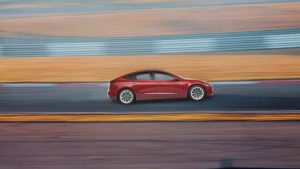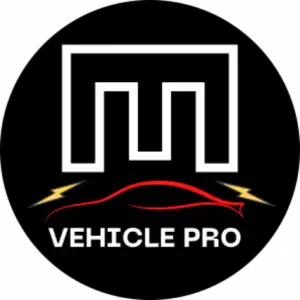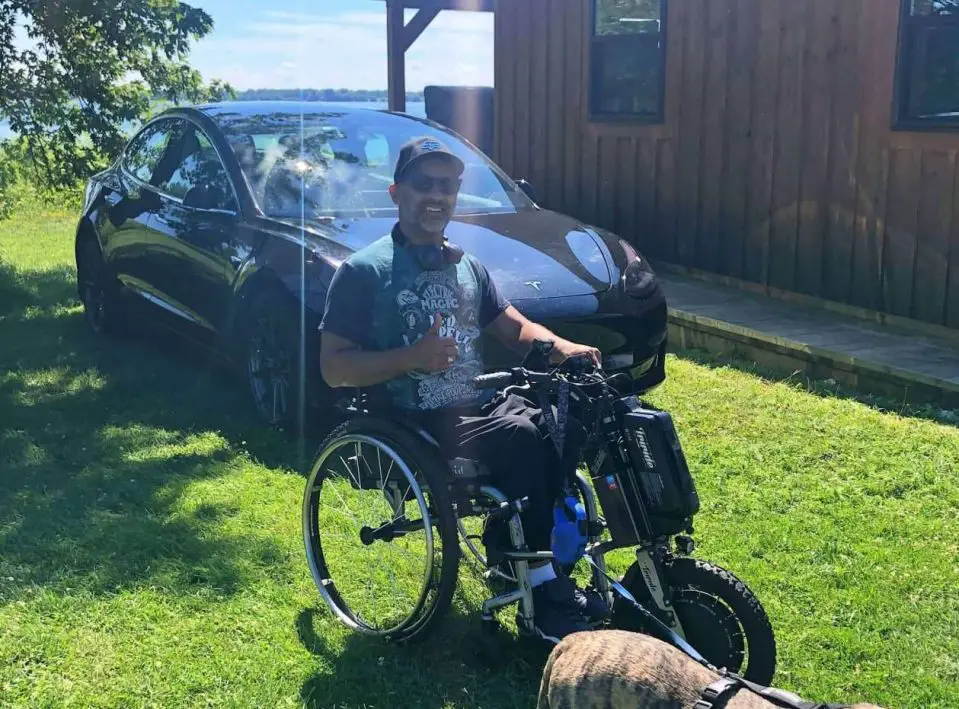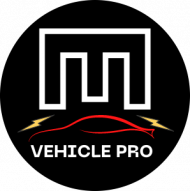Is Tesla a Good Car for Disabled Drivers?
Teslas are an excellent choice for drivers with disabilities. Full Self Drive, Summon, Power Lift Gate, Adaptive Air Suspension and Voice Commands assist drivers with a range of limited abilities. All Teslas are ready for post-market adaptive devices; Models S/X with upgraded FSD software are the best option.
One of our EVehiclePro team members had the pleasure of meeting an inspiring Tesla driver whose life was changed after an accident left him paralyzed from the chest down.
Jerome’s new abilities meant:
- he relied on upper body strength to transfer himself from a wheelchair to the car
- he needed enough room between the steering wheel and driver’s seat to lift a folded, all-terrain sports chair across
- he required hand controls for the brake and accelerator
- he fatigued easily so wanted to limit the number of vehicle-to-wheelchair transfers
- he wanted a sleek, powerful vehicle to race at the track
Jerome needed to find a vehicle that supported his independent, fast-paced lifestyle. He preferred an electric vehicle so he could plug in at home rather than making trips to a gas station that required him to get in and out of his car to pump. Jerome laughed, “Both me and my Tesla need to conserve our energy – maybe I need my own Supercharger!”
Jerome loved the look and feel of Tesla vehicles and ideally wanted a Model X for adjustable suspension and additional room allotted by the falcon doors. Unfortunately, the Model X was out of his budget. After shopping around, Jerome purchased a Tesla Model 3 and added after-market adaptive devices (hand controls).
He loves his Tesla whether he’s at the race track or cruising with his dog!

What Disabilities Can People Have and Still Drive?
Disabilities are extremely personal and based on abilities, risks and how the individual functions in various situations – such as driving. Whether or not a person with disabilities can operate a vehicle is ultimately a medico-legal decision made by a qualified health care provider.
These are examples of conditions where driving is possible with some adaptations or restrictions:
- Spinal cord injuries, paralysis
- Weak or absent limbs
- Traumatic brain injury
- Heart, lung or neuromuscular disease
- Parkinson’s Disease
- Multiple Sclerosis
- Intellectual Disability, Mood and Psychotic Disorders, Attention Deficit Disorder, Autism
Sixty per cent of adults with disabilities use their own vehicles, and make just as many daily trips for errands and appointments as non-disabled adults. Having a reduced-barrier vehicle makes life a little easier.
Bureau of Transportation Statistics
Tesla Features for Drivers with Disabilities
Tesla vehicles have several features to support drivers with disabilities, including:
- Full Self Drive and Enhanced Autopilot
- Power Lift Gate (Power Trunk)
- Adaptive Air Suspension (Models S and X)
- Voice Commands
- Falcon Doors (Model X)
Full Self Drive (FSD) and Enhanced Autopilot (EAP)
Tesla offers two autopilot software upgrades that can be helpful for drivers with disabilities – Full Self Drive (FSD) and Enhanced Autopilot (EAP).
Full Self Drive
Full Self Drive offers several features to support individuals with disabilities:
Auto Lane Change
Auto Lane Change assists drivers to move to adjacent lanes on the highway. Simply engage the turn signal and the vehicle will move as soon as safely possible.
Benefits to Disabled Drivers:
Auto Lane Change can help drivers with mobility or weakness in the head, neck and upper body. It may also reduce cognitive fatigue and support drivers with mild perceptual, intellectual or processing issues.
AutoPark
Auto Park helps drivers to perpendicular or parallel park. Drivers simply sit back and allow the vehicle to park itself.
Benefits to Disabled Drivers:
AutoPark may help drivers with poor coordination, head and neck mobility issues or mild perceptual, planning and processing issues.
Summon
Summon moves the vehicle forward and reverse in or out of a parking space. The driver must be outside the vehicle and use the Tesla app to direct the car.
Benefits to Disabled Drivers:
In the event where handicap spots are unavailable, drivers can choose a regular parking spot and use Tesla’s Summon feature to move the vehicle in and out of tight spaces up to 39.3 feet (12 m), allowing for wheelchair access.
Smart Summon
Drivers can call the vehicle to them if it’s within 200 feet. The vehicle will navigate around objects and complex environments to get to the driver. For safety reasons, Smart Summon does not function on public streets, and is best used in parking lots.
Benefits to Disabled Drivers:
Smart Summon can assist disabled drivers waiting at store entrances with items to load, or navigate around obstacles that impede their access to the car. When no disabled parking spots are available, drivers can park in any spot and summon the car to them.
Enhanced Auto Pilot (EAP)
The EAP software upgrade adds all the features of FSD except for Traffic and Stop Sign Control, and Auto Steer on City Streets.
Benefits to Disabled Drivers:
EAP may be a less expensive option than Full Self Drive, as it still comes with Auto Lane Change, AutoPark, Summon and Smart Summon. Read more to see if Enhanced Autopilot is worth it for you.
Power Lift Gate
A power lift gate enables drivers to effortlessly open and close the trunk to load items or store wheelchairs and other mobility devices.
Benefits to Disabled Drivers:
A power trunk reduces upper body fatigue and allows drivers to operate the trunk from a seated wheelchair position using a fob or the Tesla app. Tesla Model 3 does not come with a standard power lift gate for the trunk, but after-market retrofits are possible.
Adaptive Air Suspension
Models S and X have adaptive air suspension to raise or lower the ride height.
Benefits to Disabled Drivers:
Adaptive Air Suspension allows drivers to raise or lower the height, making it easier to enter and exit the vehicle thereby reducing fatigue. Drivers can also program their vehicle to adjust the height at specified locations. For example, set the height to auto raise at home to support an easier transfer between vehicle and wheelchair.
Voice Commands
All Tesla vehicles come with a voice command feature. By pressing the right scroll wheel button on the steering wheel, drivers can control settings and preferences without reaching for the touchscreen.
Benefits to Disabled Drivers:
Voice commands are useful for drivers that have difficulty using the touchscreen, due to limited upper body strength or mobility. Although many features are available using voice commands, driving-related commands are not. For example, drivers can’t use voice commands to shift between drive modes or adjust the air suspension ride height.
Falcon Doors
Tesla’s unique bat-wing doors open upward rather than outward, allowing more space and greater access to the rear seats. Falcon doors are only available on the Model X crossover SUV.
Benefits to Disabled Drivers:
Drivers can set falcon doors to open automatically upon approach, avoiding the need to use the upper body to manually open doors. Drivers have greater access to the rear seats to load wheelchairs from the side. Since many people choose to carry their chairs in the trunk or pass them from the drivers seat to the back seat, Falcon doors are a “nice to have” feature, but not essential for most drivers with disabilities.
After Market Adaptive Devices
Most Tesla owners with disabilities purchase after-market adaptive devices to personalize their Tesla vehicles. Common adaptive devices include steering wheel extensions and adaptions, spinners, knobs, turn signal extenders, seat back cushions and hand controls.
Does Tesla Have a Mobility Program?
Tesla currently does not have a mobility program so drivers don’t have the opportunity to test drive vehicles using hand controls. There are also no rebates currently offered for adaptive devices.
Which Tesla vehicles are best for disabled drivers? EVehiclePro’s Opinion
In our opinion, Tesla Model X offers the most features for drivers with disabilities. Adaptive air suspension, auto-opening Falcon doors and power trunk make this our number one choice. Model S is a close second due to its standard outward-opening doors. Models 3 and Y are good options for drivers with fewer physical needs, and can be fitted with after-market adaptive devices.
If Full Self Drive or Enhanced Auto Pilot are added, Tesla vehicles are a superior choice for drivers with a wide range of disabilities.
FAQs
Can a wheelchair fit in a Tesla vehicle?
Teslas have sufficient trunk space to transport a standard sized wheelchair and many folding sports models. Tesla’s Easy Entry feature allows extra space for drivers to transfer their chair in and out of the vehicle. Make sure to protect the console, passenger seat and touchscreen from accidental damage.
Can anyone drive with adaptive devices?
In most cases, drivers are required to undergo training on how to drive with adaptive devices. Their license will then usually be restricted e.g. “The driver can only operate a vehicle that has hand controls for the brake and accelerator”.
How do adaptive hand controls work in a Tesla?
When using adaptive hand controls, the driver will typically use a spinner to steer the vehicle (using their left hand). Their right hand controls the brake and accelerator. The “shifter” is pulled back to accelerate and pushed forward to brake.
Will a Tesla vehicle get damaged when putting a wheelchair in and out frequently?
Some drivers will fold or disassemble the chair after they transfer into the driver’s seat. This means they will be lifting the chair into the car and across them to place it either in the passenger seat or behind the driver.
Tesla’s Easy Entry feature helps to add more space. Consider a clear, plastic protection for the sidewalls on the frame to prevent damage from hitting the frame with the metal chair. Protect the passenger seat, inner door and centre console with fabric covers to keep these areas clean and prevent scratches from transporting a wheelchair. Always apply a screen protector to prevent damage and expensive repairs to the touchscreen.
Can drivers with physical limitations use Tesla’s Summon feature?
In the event where handicap spots are unavailable, drivers can choose a regular parking spot and use Tesla’s Summon feature to move the vehicle in and out of tight spaces, allowing for wheelchair access.
Smart Summon is even more advantageous and brings the vehicle directly to the driver.
Is the yoke steering wheel better for disabled Tesla drivers?
The yoke steering wheel may benefit some drivers with functional disabilities. However, some people with impaired upper body balance or coordination may find the side to side movement de-stabilizing.
Drivers who rely on the steering wheel to pull themselves into the car may prefer the standard steering wheel over the yoke. Ask for a driver rehabilitation specialist or occupational therapy assessment when choosing adaptive devices for your vehicle.
Does Tesla have a mobility program for people with disabilities?
Tesla does not have a program to assist mobility needs for drivers with disabilities. It does not offer test vehicles equipped with hand controls, nor does it offer rebates on adaptive devices. In our opinion, with Elon Musk’s involvement in assisting those with quadriplegia through the Neuralink project, Tesla has the opportunity to once again break from convention and develop a completely unique mobility niche.
Does Tesla offer discounts or rebates for adaptive devices?
At this time, Tesla does not offer any discounts or rebates for drivers that need to purchase adaptive devices.
Does insurance cover adaptive devices?
Check with your individual insurer to see if adaptive devices are covered. Some will cover the cost, particularly if the disability was related to a motor vehicle accident.
Do Tesla Supercharger stations have accessible parking spots?
Most Supercharger stations do not have accessible parking spots. Drivers are asking Tesla to advocate, although it is not the car company’s responsibility.
Since Superchargers are considered refuelling areas (like gas stations) rather than “parking” spots, disability legislation may not support drivers who need the additional space to access charging stations.
Supercharger handles are also located high up, posing a challenge to drivers in wheelchairs or those with upper body weakness. Some chargers sit on a curb, adding even more height, while others are more accessibly placed.
Until the infrastructure is updated, drivers with disabilities should use the upgraded Summon feature to move the vehicle in and out of tight parking spots. Those with adaptive air suspension can program their vehicle to raise to the appropriate height.
Are Teslas good for people with mental health issues?
Mental health experts suggest that some of Tesla’s features can support drivers with mild cognitive, intellectual, development and emotional issues. Green Light Chime and self-drive features may safely support and prompt drivers with mild attention deficits, while the glass roof gives mood-boosting sunlight to those with depression and seasonal affective disorder.
Can Tesla Model 3 fit a wheelchair?
Tesla vehicles can accommodate a standard size wheelchair or folded sports chair when stored in the trunk, although older Model 3s do not come with a power lift gate. Drivers may wish to choose a Model Y, S, X or late model 3 to enable them to open and close the trunk using a fob or the Tesla app. Alternatively, consider retro-fitting.
Model 3s have an Easy Entry feature that moves the steering wheel and seat to give drivers space to pass a folded wheelchair or mobility device into or out of the car. Seat and console protectors are advised to prevent damage to the vehicle’s interior.
Can blind people use Teslas?
Passing an eye exam with 20/40 vision is a requirement for most adults seeking a driver’s license. If this is not possible, restricted licenses allow some visually impaired adults to use adaptive devices. Lane departure warning, green light chime, cameras, pedestrian detection and automatic braking are some of Tesla’s features that can support visually impaired drivers.
Can people with intellectual or developmental disabilities drive?
People with mild intellectual or developmental disabilities can drive, provided they pass their state’s driver’s test and their doctor has no safety concerns about judgment, reaction time, distractions, concentration, perceptual issues or physical risks. One third of young adults with autism receive their driver’s license before the age of 21.



